-
06-01-2015
Perceptions of adolescent students about drugs
Revista Brasileira de Enfermagem. 2015;68(3):517-523
Abstract
Perceptions of adolescent students about drugs
Revista Brasileira de Enfermagem. 2015;68(3):517-523
DOI 10.1590/0034-7167.2015680320i
Views0See moreABSTRACT
Objective:
To analyze the perceptions of adolescent public school students about drugs.
Method:
Qualitative approach of focus groups with 16 adolescent students. The data collected were analyzed by means of content analysis, leading to the following categories: meaning of drugs; living with drug use; opinions, beliefs and attitudes toward drug use; and preventing drug abuse in adolescence.
Results:
The adolescent students know about some drugs, and associate their use with delinquent and criminal behavior. The students identifi ed factors that lead to drug abuse, such as easy access, use by family and friends, idleness, dropping out of school and the characteristic vulnerability of adolescence.
Conclusion:
the results point to the need for educational activities in the context of where the adolescents live, including school, community and family environments, to support and to minimize their vulnerability.
-
06-01-2015
Cognitive stimulation for older people with Alzheimer’s disease performed by the caregiver
Revista Brasileira de Enfermagem. 2015;68(3):510-516
Abstract
Cognitive stimulation for older people with Alzheimer’s disease performed by the caregiver
Revista Brasileira de Enfermagem. 2015;68(3):510-516
DOI 10.1590/0034-7167.2015680319i
Views0See moreABSTRACT
Objective:
to learn the infl uence of cognitive therapy at home, conducted by the caregivers of older people with Alzheimer’s Disease.
Method:
a case study was developed with fi ve older people with Alzheimer’s Disease and their caregivers. The stages of research development were: orientation with the caregivers; selection of older people and caregivers; approach of the study subjects at home; weekly meetings and reapplication of tests to follow up the cognitive function of the participants.
Results:
in three months it was possible to identify improved cognition, verifi ed by the result of the Mini-Mental State Examination (MMSE). The scores of the other tests (KATZ, LAWTON, CLOCK TEST and VFT) remained the same.
Conclusion:
this strategy can be considered a light technology of nursing care for older people with dementia. When providing this care with the support of a nurse, caregivers re feel less anxious and understand the disease better.

-
06-01-2015
Anxiety and spirituality in university students: a cross-sectional study
Revista Brasileira de Enfermagem. 2015;68(3):504-509
Abstract
Anxiety and spirituality in university students: a cross-sectional study
Revista Brasileira de Enfermagem. 2015;68(3):504-509
DOI 10.1590/0034-7167.2015680318i
Views0See moreABSTRACT
Objective:
to study anxiety and spirituality and the relationship between them in university students.
Method:
the State-Trait-Anxiety Inventory (STAI) and Pinto and Pais-Ribeiro Spirituality Scales were used for data collection.
Results:
six hundred and sixty-nine students participated in the study, of whom 91.5% had moderate and high levels of trait anxiety and 92.9% of state anxiety; 93.8% had high spirituality scores. The multiple linear regression test showed a signifi cant relationship between anxiety and the presence of physical discomfort, unusual body movements, and the need for treatment. Furthermore, higher levels of anxiety were associated with the female gender, the lack of leisure activities, and low levels of optimism in the spirituality scale.
Conclusion:
it is important to develop strategies for coping with anxiety, which in turn can be oriented toward protective factors such as spirituality.
-
06-01-2015
Nursing guidance on bed baths to reduce anxiety
Revista Brasileira de Enfermagem. 2015;68(3):497-503
Abstract
Nursing guidance on bed baths to reduce anxiety
Revista Brasileira de Enfermagem. 2015;68(3):497-503
DOI 10.1590/0034-7167.2015680317i
Views0See moreABSTRACT
Objective:
to evaluate the effectiveness of a nursing guidance protocol to reduce the anxiety of patients with acute coronary syndrome undergoing bed bath, and the correlation of vital signs with state-anxiety.
Method:
randomized clinical trial study. The sample consisted of 120 patients. The intervention group received a nursing guidance protocol about bed bath and the control group received the unit’s routine information. The STAI-State scale was used to assess anxiety, and data were collected at three times: immediately after informing the patients about the bed bath; immediately after interventions; and immediately after the bath.
Results:
the intervention group presented signifi cantly lower state-anxiety compared to the control group (p<0.001) after the intervention.
Conclusion:
the nursing orientation was effective to reduce anxiety in patients with acute coronary syndrome undergoing bed bath.

-
06-01-2015
Body language in health care: a contribution to nursing communication
Revista Brasileira de Enfermagem. 2015;68(3):490-496
Abstract
Body language in health care: a contribution to nursing communication
Revista Brasileira de Enfermagem. 2015;68(3):490-496
DOI 10.1590/0034-7167.2015680316i
Views0See moreABSTRACT
Objective:
to classify body language used in nursing care, and propose “Body language in nursing care” as an analytical category for nursing communication.
Method:
quantitative research with the systematic observation of 21:43 care situations, with 21 members representing the nursing teams of two hospitals. Empirical categories: sound, facial, eye and body expressions.
Results:
sound expressions emphasized laughter. Facial expressions communicated satisfaction and happiness. Eye contact with members stood out in visual expressions. The most frequent body expressions were head movements and indistinct touches.
Conclusion:
nursing care team members use body language to establish rapport with patients, clarify their needs and plan care. The study classifi ed body language characteristics of humanized care, which involves, in addition to technical, non-technical issues arising from nursing communication.
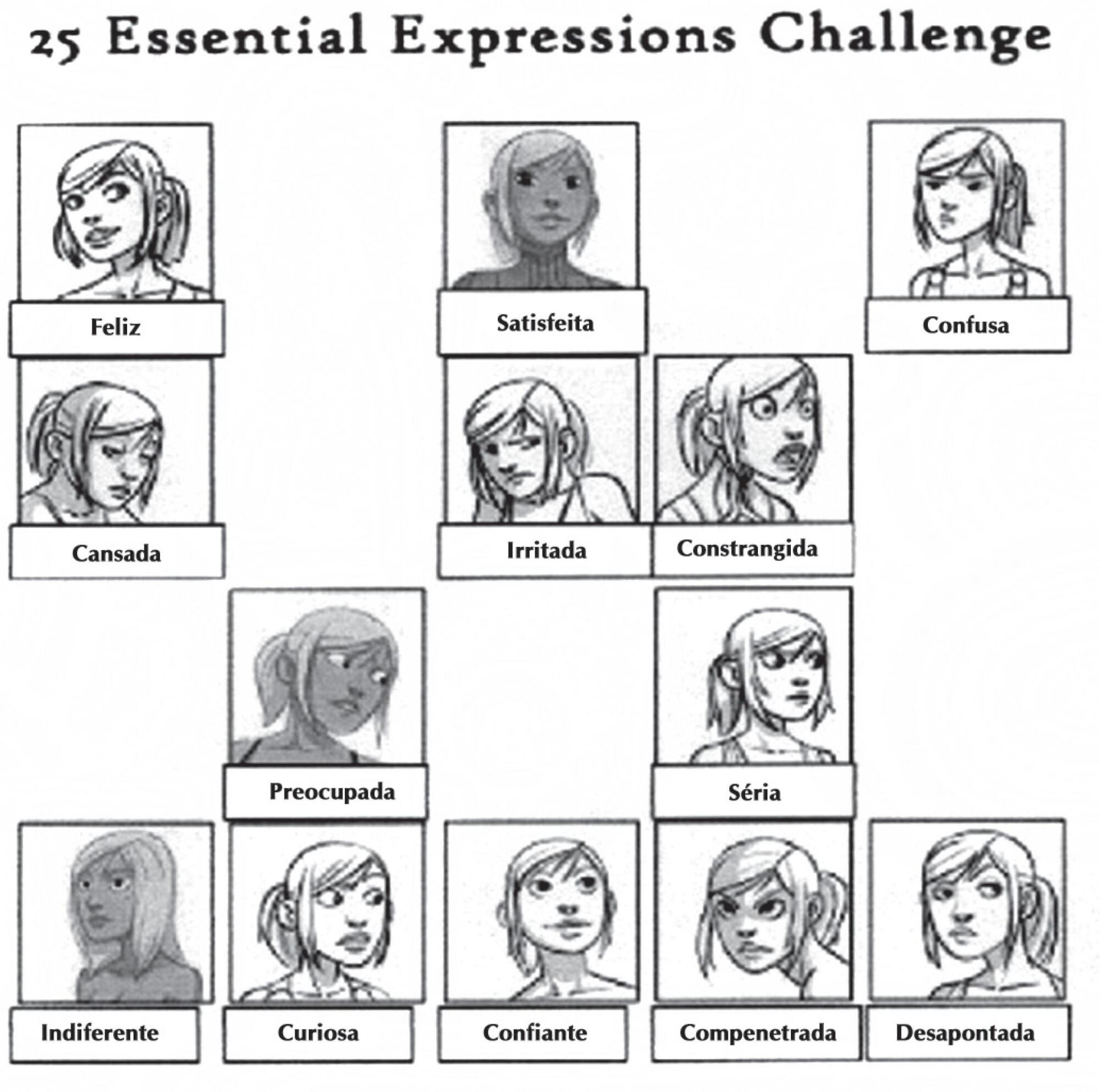
-
06-01-2015
Health promotion in supplementary health care: outsourcing, microregulation and implications for care
Revista Brasileira de Enfermagem. 2015;68(3):482-489
Abstract
Health promotion in supplementary health care: outsourcing, microregulation and implications for care
Revista Brasileira de Enfermagem. 2015;68(3):482-489
DOI 10.1590/0034-7167.2015680315i
Views1See moreABSTRACT
Objective:
to analyze health promotion programs in the supplementary health care.
Methods:
This was a multiple case study with a qualitative approach whose data were obtained from interviews with coordinators of providers contracted by the corporations of health insurance plans in Belo Horizonte, Minas Gerais. The data were submitted to Critical Discourse Analysis.
Results:
Home care has been described as the main action in the fi eld of health promotion transferred to the providers, followed by management of patients and cases, and the health education.groups. The existence of health promotion principles is questionable in all programs. Outsourcing is marked by a process with a division between cost and care management. Implications of this process occur within admission and interventions on the needs of the benefi ciaries.
Conclusions:
Statements revealed rationalization of cost, restructuring of work, and reproduction of the dominant logic of capital accumulation by the health insurance companies.
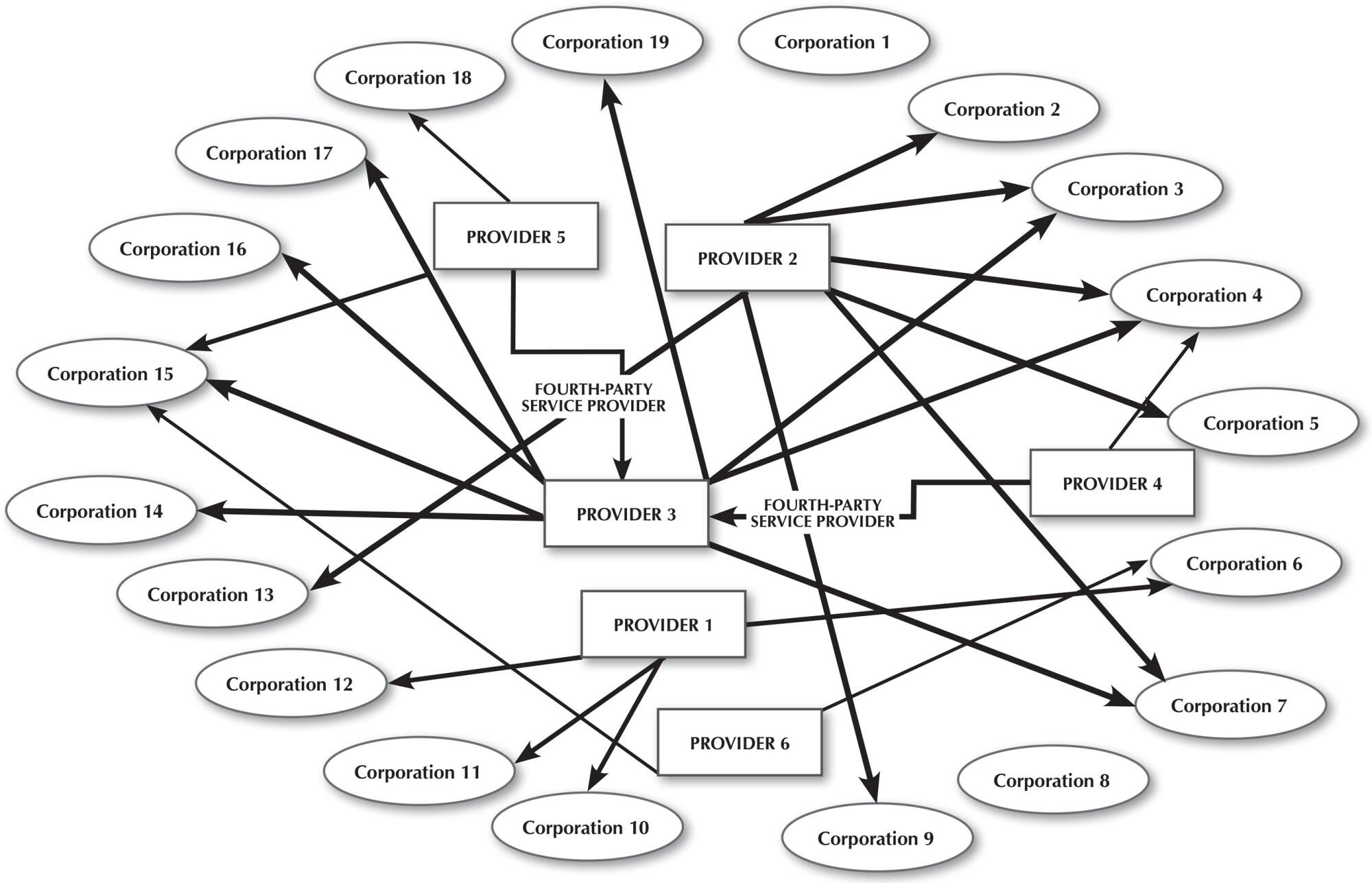
-
06-01-2015
Drug addicts treatment motivations: perception of family members
Revista Brasileira de Enfermagem. 2015;68(3):474-481
Abstract
Drug addicts treatment motivations: perception of family members
Revista Brasileira de Enfermagem. 2015;68(3):474-481
DOI 10.1590/0034-7167.2015680314i
Views1See moreABSTRACT
Objective:
to identify the reasons and motivations why family members search treatment for the drug addicted.
Method:
descriptive qualitative research, developed in 2012 and 2013, in a Drug Addicts Rehabilitation Unit of Parana State, Brazil. A total of 19 semi-structured interviews were conducted with the drug addicts’ family members in treatment. The results were analyzed based on the Transtheoretical Model of Behavior Change and organized in thematic categories according with qualitative data analysis.
Results:
the search for treatment for drug addicts occurred: in the pre-contemplation stage infl uenced by external factors; in the contemplation stage both for ambivalence and behavioral changes needs; in the action stage by awareness of drug addiction and also professional help needs; and in the maintenance stage because of the non-conservation of behavioral changes.
Conclusion:
an evaluation of motivational stages in the beginning of treatment is required for expansion of success possibilities in the rehabilitation process.
-
06-01-2015
Gateway to the diagnosis of tuberculosis among elders in Brazilian municipalities
Revista Brasileira de Enfermagem. 2015;68(3):467-473
Abstract
Gateway to the diagnosis of tuberculosis among elders in Brazilian municipalities
Revista Brasileira de Enfermagem. 2015;68(3):467-473
DOI 10.1590/0034-7167.2015680313i
Views0See moreABSTRACT
Objective:
to analyze the factors associated with the gateway of the health systems of Brazilian municipalities for the diagnosis of tuberculosis in older people.
Method:
survey study type, with a sample of 91 elders, in a population with 706 cases of tuberculosis. Data were collected by means of an instrument based on the Primary Care Assessment Tool (PCAT) adapted for tuberculosis care, emphasizing the gateway variable. Variables were categorized and compared between primary health care (PHC) and specialized care (SC) services. Bivariate analysis and the Chi-square association test were used.
Results:
a statistically signifi cant association (p = 0.0001) was found between the fi rst health service sought and the unit that diagnosed tuberculosis, showing better performance of specialized care services in the diagnosis.
Conclusion:
it is necessary to improve primary health care services to tackle delayed diagnosis of tuberculosis in older people.
-
EXPERIENCE REPORT01-01-2018
Clinical and epidemiological teaching of dengue through simulated practice
Revista Brasileira de Enfermagem. 2018;71(2):451-456
Abstract
EXPERIENCE REPORTClinical and epidemiological teaching of dengue through simulated practice
Revista Brasileira de Enfermagem. 2018;71(2):451-456
DOI 10.1590/0034-7167-2016-0503
Views2See moreABSTRACT
Objective:
to describe the experience of clinical teaching on dengue and the practice of epidemiological surveillance using problematization methodology.
Method:
report of experience on educational activity with undergraduate nursing students, held in March 2016, at a public university in the city of São Paulo, conceived in four stages: dialogic lecture, active search of Aedes aegypti, case study and simulation of nursing consultation to individuals with dengue.
Results:
The activity allowed to retrieve previous knowledge about the disease, respond to exercises that addressed different clinical situations and epidemiological surveillance, including in situ evaluation of possible mosquito outbreaks, and discuss the need to expand prevention and health of the individual and the community, the impact of the media in the dissemination of cases and the coping difficulties experienced in the different levels of attention.
Conclusion:
the methodology adopted enabled qualified training of students to cope with dengue.

-
ORIGINAL ARTICLE07-18-2022
Beliefs, knowledge, actions of nursing techniques in breastfeeding in pain management in immunization
Revista Brasileira de Enfermagem. 2022;75(6):e20210546
Abstract
ORIGINAL ARTICLEBeliefs, knowledge, actions of nursing techniques in breastfeeding in pain management in immunization
Revista Brasileira de Enfermagem. 2022;75(6):e20210546
DOI 10.1590/0034-7167-2021-0546
Views1See moreABSTRACT
Objective:
Understand the beliefs, knowledge, and actions of nursing technicians on breastfeeding as a form of non-pharmacological intervention to relieve pain in newborns and infants during immunization.
Methods:
Qualitative study carried out through semi-structured interviews with nine nursing technicians from three Basic Health Units in a city in the state of São Paulo. The theoretical approach of the Belief Model and the methodological framework of Thematic Analysis supported this study.
Results:
Three themes originated: Beliefs, Knowledge, and Actions of nursing technicians.
Final considerations:
Despite knowledge about the benefits of breastfeeding as the most effective method for relieving pain in newborns and infants during vaccination, their restrictive beliefs overrode the evidence, leading them to act in ways that discourage or prevent the mother from breastfeed during vaccination. Formal training is recommended to align with current evidence-based practices.
-
REVIEW12-08-2023
Educational technologies for accident prevention due to falls in childhood: a scoping review
Revista Brasileira de Enfermagem. 2023;76:e20220807
Abstract
REVIEWEducational technologies for accident prevention due to falls in childhood: a scoping review
Revista Brasileira de Enfermagem. 2023;76:e20220807
DOI 10.1590/0034-7167-2022-0807
Views2See moreABSTRACT
Objectives:
to map evidence on educational technology use for accident prevention due to falls in childhood.
Methods:
a scoping review, carried out in October and November 2022, in the MEDLINE, Web of Science, BDENF and CINAHL databases and LILACS bibliographic index. There was no delimitation of language or time. Data were extracted and analyzed descriptively by two independent researchers. The research protocol was registered in the Open Science Framework.
Results:
twenty-six studies were selected. Booklets, pamphlets and leaflets were the most used technologies, presenting health services as the most frequent environment to develop research on fall prevention. The technologies developed were important outcomes: increased knowledge of children, family members, caregivers, health and education professionals.
Conclusions:
educational technology use makes it possible to increase knowledge, adopt safe practices and reduce falls.

-
REVIEW03-15-2024
Resources for health literacy among caregivers of prematurely born children: a scoping review
Revista Brasileira de Enfermagem. 2024;77(1):e20230062
Abstract
REVIEWResources for health literacy among caregivers of prematurely born children: a scoping review
Revista Brasileira de Enfermagem. 2024;77(1):e20230062
DOI 10.1590/0034-7167-2023-0062
Views1See moreABSTRACT
Objectives:
to map the available evidence on resources used to promote health literacy among caregivers of prematurely born children during outpatient follow-up.
Methods:
the Joanna Briggs Institute’s scope review protocol was utilized. The search encompassed six databases, incorporating studies from 2012 to 2022.
Results:
the three included publications revealed that the resources employed are: mobile applications, phone calls, individual counseling, videos, educational pamphlets, and group discussions. Implementing an education protocol during the transition home enhances scientifically grounded health promotion rates.
Conclusions:
there is limited literature addressing the health literacy of these caregivers. The nursing team plays a crucial role in health education and in developing resources applicable to these families.

-
ORIGINAL ARTICLE01-13-2024
Social representations of oncologic surgery for patients with cancer
Revista Brasileira de Enfermagem. 2024;77(6):e20230273
Abstract
ORIGINAL ARTICLESocial representations of oncologic surgery for patients with cancer
Revista Brasileira de Enfermagem. 2024;77(6):e20230273
DOI 10.1590/0034-7167-2023-0273
Views2See moreABSTRACT
Objectives:
to analyze the social representations of patients with cancer regarding oncologic surgery.
Methods:
a qualitative study based on Social Representation Theory was conducted with 126 participants between October 2021 and May 2022 in a public hospital in Rio de Janeiro. A characterization questionnaire, free evocations of the inducing term “surgery”, and semi-structured interviews with 60 participants were applied. Data were analyzed using Microsoft Excel® and IRaMuTeQ.
Results:
the central core of the representation is composed of fear, cure, hope, and removing the disease. The analysis of interviews resulted in six classes that highlight the social changes caused by treatment as well as the need for a support network to cope with the surgical process.
Final Considerations:
the representations reflect fear and hope towards the procedure and the desire to remove the disease, thus translating the cure through surgery.

-
ORIGINAL ARTICLE01-13-2024
Nurses’ perspectives on the use of telemonitoring in the management of people with diabetes and hypertension
Revista Brasileira de Enfermagem. 2024;77(6):e20230481
Abstract
ORIGINAL ARTICLENurses’ perspectives on the use of telemonitoring in the management of people with diabetes and hypertension
Revista Brasileira de Enfermagem. 2024;77(6):e20230481
DOI 10.1590/0034-7167-2023-0481
Views3See moreABSTRACT
Objectives:
to understand the perspective of nurses on the use of telemonitoring in the management of people with type 2 diabetes mellitus and arterial hypertension in primary care.
Methods:
this qualitative research involved sixteen nurses from eight municipalities in Paraná. Data were collected between November 2022 and January 2023 through inperson or remote interviews, which were audio-recorded and subjected to content analysis.
Results:
according to the nurses, telemonitoring enhances users’ knowledge about these conditions, communication and connection with the team, and productivity. However, the lack of electronic resources and equipment, high staff turnover, low user adherence, and the limited availability of professional time present significant challenges.
Final Considerations:
the effective implementation and operation of telemonitoring in the management of people with diabetes and hypertension involve both potential benefits and barriers. It is essential to have the availability of human and technological resources, managerial support, and the commitment of professionals and users.
-
ERRATUM01-13-2024
ERRATUM
Revista Brasileira de Enfermagem. 2024;77(6):e2024n6e08
Abstract
ERRATUMERRATUM
Revista Brasileira de Enfermagem. 2024;77(6):e2024n6e08
DOI 10.1590/0034-7167.20247706e08
Views2In the article “Brazilian nursing specific situation, middle and micro-range theories: a bibliometric study”, with DOI number: , published in Revista Brasileira de Enfermagem, 2024;77(4):e20230520, Chart 1:Where it read:[…]See more -
ORIGINAL ARTICLE09-29-2022
Palliative care production for health professionals in the context of home care
Revista Brasileira de Enfermagem. 2022;75(1):e20210030
Abstract
ORIGINAL ARTICLEPalliative care production for health professionals in the context of home care
Revista Brasileira de Enfermagem. 2022;75(1):e20210030
DOI 10.1590/0034-7167-2021-0030
Views1See moreABSTRACT
Objectives:
to analyze palliative care production developed by health professionals to home care patients.
Methods:
this is an exploratory study, with a qualitative approach, using the transpersonal care theoretical framework. Thirteen interviews were conducted with health professionals and 18 observations were conducted on different cases. Content analysis was performed using MAXQDA©.
Results:
actions performed: maintenance and follow-up measures to people eligible for palliative care, in acts of dialogue and “listening” to caregivers and users, conducting guidelines for the care and self-care process, performing technical procedures, delivery of materials, referrals and medical prescriptions to users.
Final Considerations:
it is perceived the need for advances in the implementation of government policies in Brazil that insert palliative care into the Health Care Network through educational, managerial and care actions that ensure human dignity, thus allowing the development of these and other palliative care interventions.
-
REFLECTION02-22-2021
Convergent care research and its qualification as scientific research
Revista Brasileira de Enfermagem. 2021;74(1):e20190657
Abstract
REFLECTIONConvergent care research and its qualification as scientific research
Revista Brasileira de Enfermagem. 2021;74(1):e20190657
DOI 10.1590/0034-7167-2019-0657
Views0See moreABSTRACT
Objectives:
to highlight the main attributes of Convergent Care Research that ratify it as a method of scientific research. Methods: it is a theoretical-reflective study on Convergent Care Research’s theoretical-methodological assumptions. Development: Convergent Care Research is compatible with the Social Constructionism paradigm. Convergent Care Research projects have two approaches: practical and conceptual. The Convergent Care Research process corpus contains five phases: conception; instrumentation; scrutiny; analysis and theorizing. Final Considerations: Convergent Care Research rigor encompasses the relationship between research and care practice, and this corresponds to the convergence of these two dimensions. Due to its theoretical foundation and criteria of methodological rigor, Convergent Care Research is aligned with scientific research methods.
-
07-05-2021
Factors associated with urinary tract infection in a Nursing Home
Revista Brasileira de Enfermagem. 2021;74:e20200813
Abstract
Factors associated with urinary tract infection in a Nursing Home
Revista Brasileira de Enfermagem. 2021;74:e20200813
DOI 10.1590/0034-7167-2020-0813
Views1See moreABSTRACT
Objective:
to analyze the factors associated with urinary tract infection occurrence in institutionalized elderly.
Methods:
this is a cross-sectional, analytical, quantitative study with 116 elderly people from a Nursing Home. Urinary tract infection diagnosis was carried out through urine culture and clinical assessment. Demographic data and associated factors were obtained from medical records. Statistical analysis included bivariate analysis and logistic regression models.
Results:
the factors associated with urinary tract infection (p<0.05) were being female; wheelchair user; diaper use; diuretic use; urinary and bowel incontinence; type 1 diabetes; benign prostatic hyperplasia; dehydration.
Conclusion:
this study revealed that it is important to consider non-modifiable factors such as sex and clinical comorbidities; however, dehydration, a modifiable factor, increased the chances of developing urinary tract infections by 40 times among institutionalized elderly and demands greater attention from the health team.
-
ORIGINAL ARTICLE05-24-2021
Content validation of an educational booklet for asthma control and management in children
Revista Brasileira de Enfermagem. 2021;74:e20200353
Abstract
ORIGINAL ARTICLEContent validation of an educational booklet for asthma control and management in children
Revista Brasileira de Enfermagem. 2021;74:e20200353
DOI 10.1590/0034-7167-2020-0353
Views0See moreABSTRACT
Objective:
to validate the content and appearance of the educational booklet “You can control your child’s asthma – let’s learn together?” with parents and caregivers of children with asthma.
Methods:
this is a methodological study, carried out with 34 mothers and caregivers of children, from two to 10 years old, diagnosed with asthma. The educational booklet validation was performed using Content Validity Index (CVI) and assessment of comprehension, attractiveness, self-efficacy, persuasion, and cultural acceptance domains.
Results:
the booklet was considered clear (99.8%) and relevant (100%), with a global CVI of 0.99. Domain assessment proved to be an easy-to-understand tool, culturally appropriate, attractive, with persuasive power and promoting self-efficacy.
Conclusion:
the booklet is valid and adequate for promoting the self-efficacy of parents and caregivers in childhood asthma control and management, potentially scalable to other realities of outpatient care.
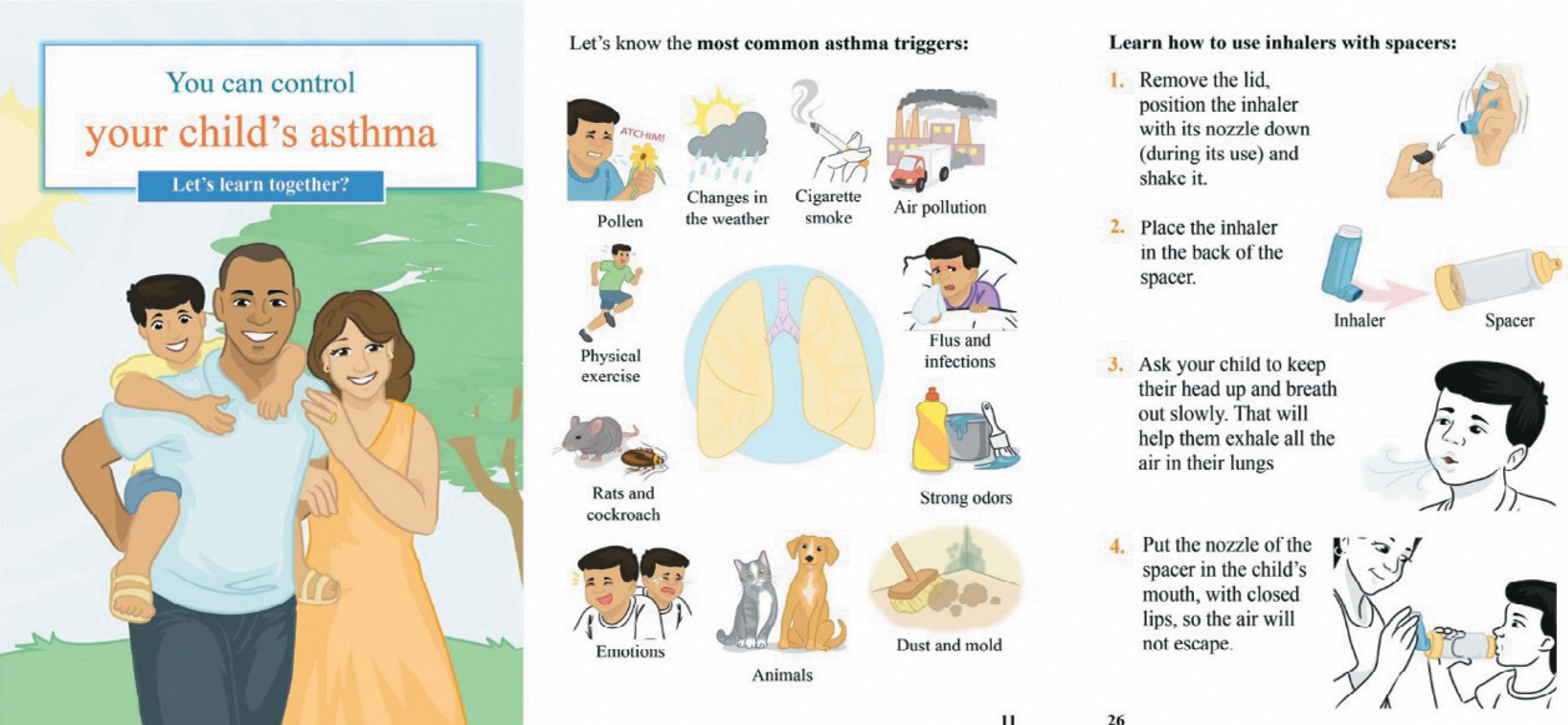
-
REVIEW10-05-2020
Self-efficacy of health professionals in hand hygiene practice: is it possible to measure?
Revista Brasileira de Enfermagem. 2020;73:e20190873
Abstract
REVIEWSelf-efficacy of health professionals in hand hygiene practice: is it possible to measure?
Revista Brasileira de Enfermagem. 2020;73:e20190873
DOI 10.1590/0034-7167-2019-0873
Views0See moreABSTRACT
Objective:
To identify in the literature the tools used to measure self-efficacy of health professionals in hand hygiene.
Methods:
Integrative literature review carried out by consulting the databases PubMed, Scopus, Web of Science, Cumulative Index to Nursing and Allied Health Literature, Europe PubMed Central, and Science Direct using the descriptors Self Efficacy, Hand Hygiene, and Health Personnel.
Results:
Six articles, all of which with observational design, were selected. It was possible to infer that four studies used validated instruments to measure self-efficacy of health professionals in the conformity with the recommendations for hand hygiene. The other studies used questionnaires that were not validated.
Final considerations:
Despite the extensive literature on hand hygiene, there is a lack of scientific evidence regarding the use of validated instruments to measure self-efficacy of health professionals in the procedure. The use of properly validated psychometric instruments is useful to guarantee the quality of results in studies.
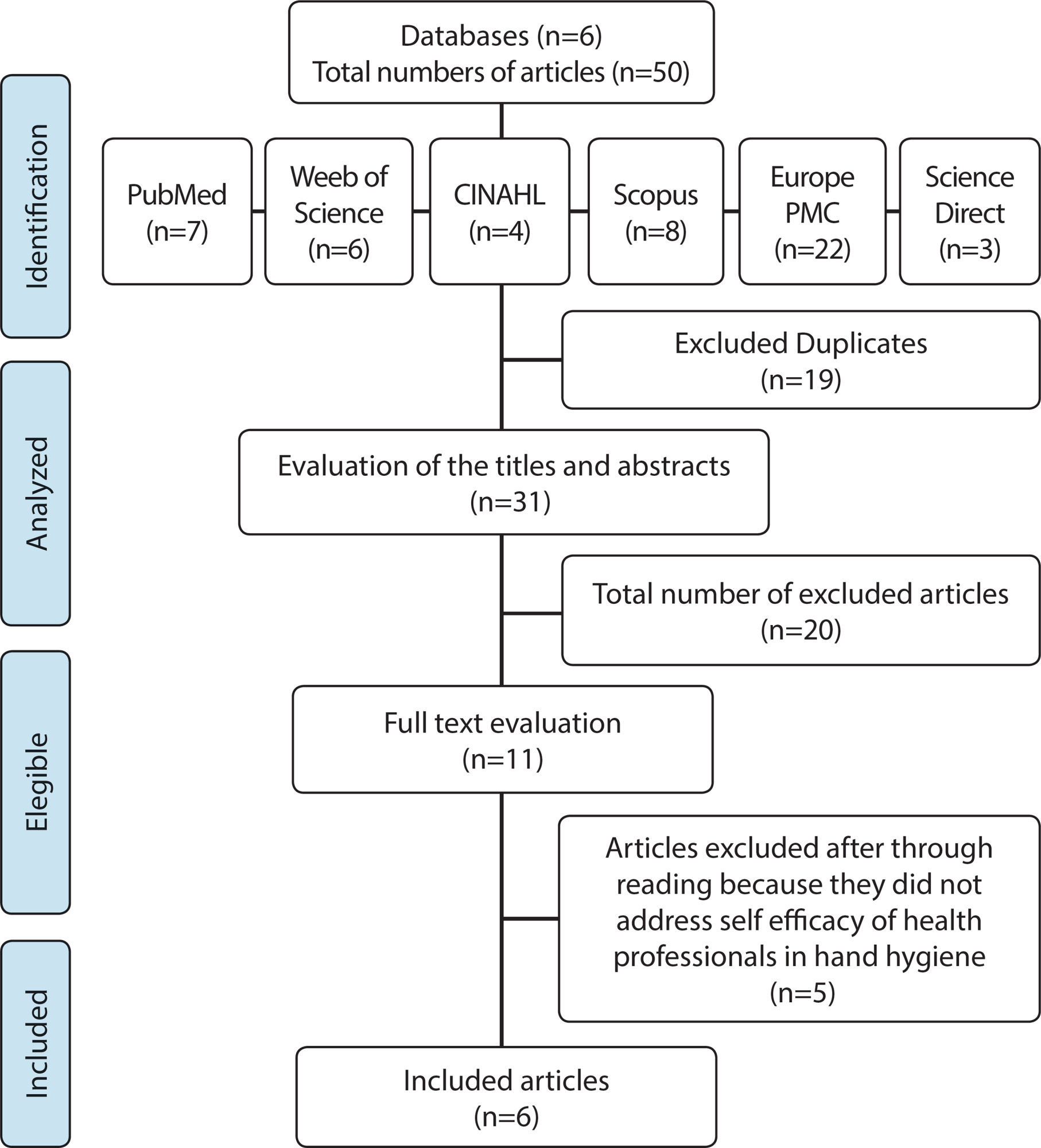
-
ORIGINAL ARTICLE07-01-2020
Obstetric analgesia in labor and its association with neonatal outcomes
Revista Brasileira de Enfermagem. 2020;73(5):e20180757
Abstract
ORIGINAL ARTICLEObstetric analgesia in labor and its association with neonatal outcomes
Revista Brasileira de Enfermagem. 2020;73(5):e20180757
DOI 10.1590/0034-7167-2018-0757
Views0See moreABSTRACT
Objetive:
To investigate the association between analgesia during labor and occurrence of neonatal outcomes.
Method:
Retrospective cohort study with medical records of 850 parturient. The exposure variable of interest was receiving pharmacological analgesia during labor and neonatal outcomes were: one- and five-minute Apgar, resuscitation maneuvers and referral of the newborn to Neonatal ICU. A logistic regression was carried out to obtain Odds Ratios and 95% confidence interval, with adjustment for confounding factors.
Results:
Among the women studied, 35% received analgesia and this use was associated with a greater chance of neonatal outcomes such as one-minute Apgar < 7 (p <0.0001), resuscitation maneuvers (p <0.001) and referral to the Neonatal ICU (p = 0.004), mostly were among low-risk pregnant women, even after adjustments.
Conclusion:
The use of pharmacological analgesia during labor is associated with one-minute Apgar < 7, resuscitation maneuvers and referral to the Neonatal ICU.
-
10-01-2022
Benchmarking of mobile apps on heart failure
Revista Brasileira de Enfermagem. 2022;75(1):e20201093
Abstract
Benchmarking of mobile apps on heart failure
Revista Brasileira de Enfermagem. 2022;75(1):e20201093
DOI 10.1590/0034-7167-2020-1093
Views0INTRODUCTIONHeart failure (HF) is an emerging global threat, with a current prevalence of 64.34 million cases on the planet (8.52 per 1,000 inhabitants), representing 9.91 million years lost due to disability and spending of US$346.17 billion(), with a prospect of an increase despite therapeutic advances. These data alert to the prioritization of preventive actions and […]See more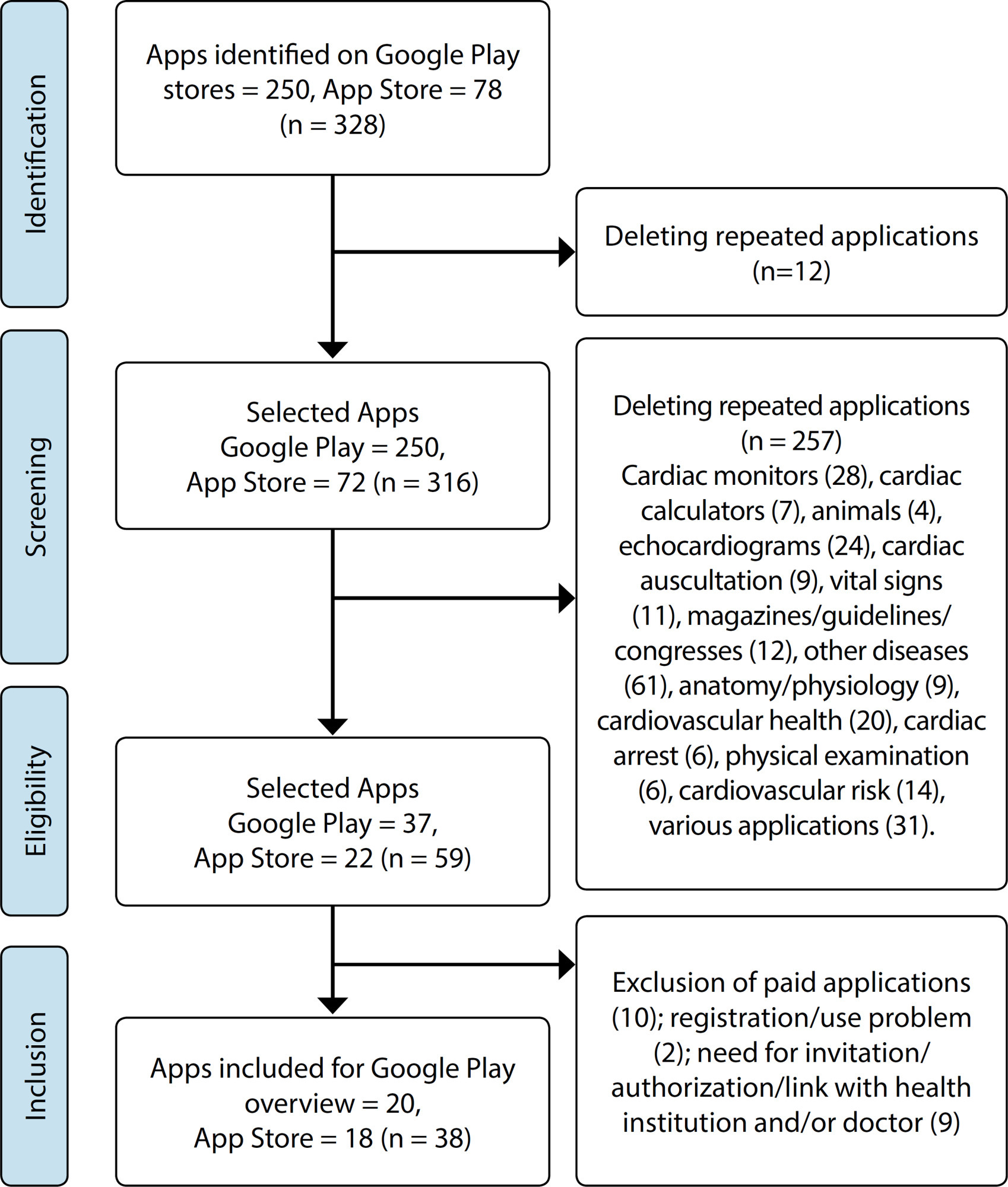
-
ORIGINAL ARTICLE07-08-2020
Nurses’ practice in quilombola communities: an interface between cultural and political competence
Revista Brasileira de Enfermagem. 2020;73(5):e20190433
Abstract
ORIGINAL ARTICLENurses’ practice in quilombola communities: an interface between cultural and political competence
Revista Brasileira de Enfermagem. 2020;73(5):e20190433
DOI 10.1590/0034-7167-2019-0433
Views1See moreABSTRACT
Objectives:
to understand Family Health Strategy nurses’ practices in the context of quilombola communities with an interface for cultural and political competences.
Methods:
a single integrated, qualitative case study carried out on seven Family Health Strategies located in the Metropolitan Region of Belo Horizonte, state of Minas Gerais. Seven nurses and 59 quilombolas participated. Data were collected through individual interviews with nurses, collective interviews with quilombolas and observation. For analysis, the thematic content analysis was adopted.
Results:
the results revealed structural and territorial problems, which are configured as barriers for professional-user encounter as well as for professional practice performance.
Final Considerations:
it is necessary that Family Health Strategy nurses, based on political and cultural competences, create strategies that minimize the difficulties found in the implementation of health actions directed to quilombolas. Such strategies anchored in inclusive public policies.
-
ORIGINAL ARTICLE08-19-2019
Health promotion by nursing technicians from the nurses’ perspective
Revista Brasileira de Enfermagem. 2019;72(4):979-987
Abstract
ORIGINAL ARTICLEHealth promotion by nursing technicians from the nurses’ perspective
Revista Brasileira de Enfermagem. 2019;72(4):979-987
DOI 10.1590/0034-7167-2018-0552
Views0See moreABSTRACT
Objective:
to analyze education and practice of nursing technicians in health promotion, from the perspective of teaching nurses of technical course and Primary Health Care nurses.
Method:
an exploratory study with qualitative data analysis, carried out in the city of São Paulo, through semi-structured interviews with nine public technical professors and 16 nurses from the basic health network. Data thematic analysis was carried out.
Results:
three thematic categories have emerged: Conceptions and experiences on health promotion; Nursing technician’s practice in health promotion; and Nursing technician education on health promotion.
Final considerations:
it is necessary to review the centrality given to technicalism in the education and practice of nursing technicians, contemplating the health promotion and seeking the development of professional competence for the construction of transformative practices aimed at valuing the autonomy and proactivity of the people in health and quality of life production.
Search
Search in:
Nuvem de Tags
Adolescente (85) Atenção Primária à Saúde (239) COVID-19 (91) Criança (91) Cuidados de Enfermagem (269) Educação em Enfermagem (151) Educação em Saúde (139) Enfermagem (930) Enfermagem Pediátrica (86) Estudantes de Enfermagem (77) Estudos de Validação (131) Família (87) Idoso (208) Promoção da Saúde (99) Qualidade de Vida (104) Saúde do Trabalhador (86) Saúde Mental (145) Saúde Pública (82) Segurança do Paciente (150) Tecnologia Educacional (100)



